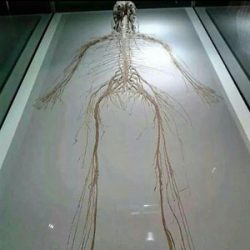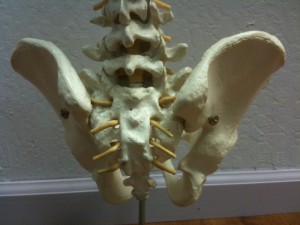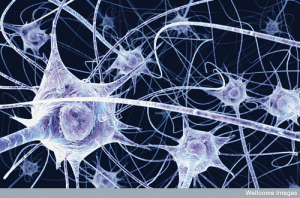Nervous System, Chiropractic and Innate Intelligence
This is a picture of a person’s entire nervous system (with the exception of the nerve endings in the skin). As far as I am concerned, this is what ‘someone’ looks like in their distilled essence. This mass of neurons was once sentient. It produced the mind and housed the intellect of the person it belonged to. It processed the information coming in through the senses and painted of a picture of the world the person found themselves in. It controlled various bodily processes. I steered the body through the obstacles of life. It once had dreams and ambitious. It learned how to interact with other nervous systems. It encoded the information it found relevant into long term memory. It enjoyed the pleasures of life and it had original ideas. It mourned the loss of others and experienced the sensation of physical pain. At times it became depressed/stressed/anxious/content/relaxed/afraid/empathetic/concerned. It fell in love and procreated with others. It had invested interest in the pursuit for knowledge. It knew that it would not last forever so it at one point in its life it decided to donate itself, once expired, for scientific research. This photo wouldn’t exist if the mind this nervous system once generated didn’t have a sense of intellectual altruism for everyone else it left behind. Whomever this nervous system once belonged to, you are appreciated.
Functions of the Nervous System
The nervous system has 3 main functions: sensory, integration, and motor.
- Sensory. The sensory function of the nervous system involves collecting information from sensory receptors that monitor the body’s internal and external conditions. These signals are then passed on to the central nervous system (CNS) for further processing by afferent neurons (and nerves).
- Integration. The process of integration is the processing of the many sensory signals that are passed into the CNS at any given time. These signals are evaluated, compared, used for decision making, discarded or committed to memory as deemed appropriate. Integration takes place in the gray matter of the brain and spinal cord and is performed by interneurons. Many interneurons work together to form complex networks that provide this processing power.
- Motor. Once the networks of interneurons in the CNS evaluate sensory information and decide on an action, they stimulate efferent neurons. Efferent neurons (also called motor neurons) carry signals from the gray matter of the CNS through the nerves of the peripheral nervous system to effector cells. The effector may be smooth, cardiac, or skeletal muscle tissue or glandular tissue. The effector then releases a hormone or moves a part of the body to respond to the stimulus.



